Singaporean cuisine is a fusion of Chinese, Malay, Indian, and similar cuisines. That means that biryani (Indian spiced rice) is just as much a local food as pig’s organ soup (Chinese and exactly what it sounds like). One thing that local dishes have in common – especially the kind found at hawker centres – is the use of a lot of oil. The other commonality is debate over whose cuisine it originally was. There is also a lot of both rice and noodles, along with durian (the smell of which I can’t handle). Below are the top dishes you’ll see, though this list is just a drop in the bucket:
Food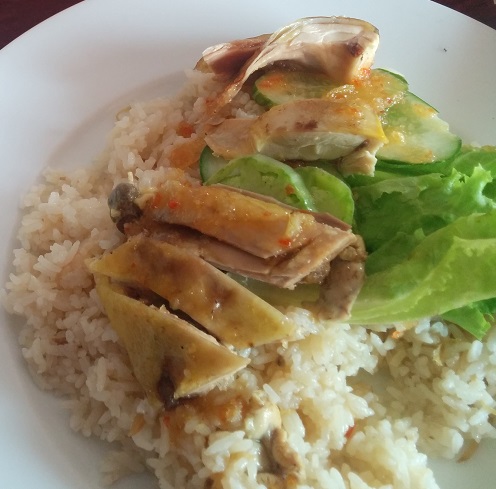
- Kaya Toast and Soft-Boiled Eggs: This is the national breakfast. Kaya is a spread that is supposedly made of coconut and fruit, though at the store, it always looked purple or green. People generally dip the sweet toast into the very soft eggs.
- (Hainanese) Chicken Rice: This is one of Singapore’s most-well-known dishes, and one I don’t really understand. Here’s why: it’s white rice and boiled chicken. (There is usually a sauce available on the side and two slices of cucumber too.) Pardon my ignorance, but doesn’t every culture have this??
- Hokkien Mee: This is another of Singapore’s signature dishes.
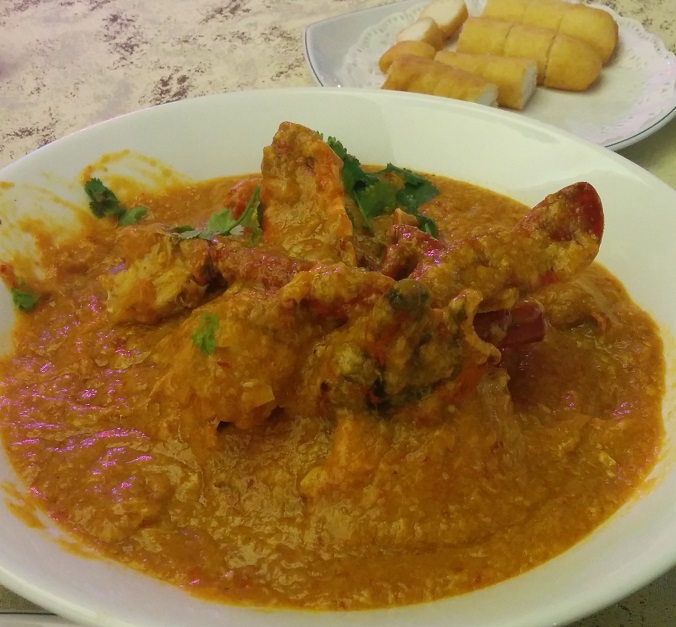 It’s made of thin noodles stir fried with seafood or pork, veggies, and a bunch of oil/lard.
It’s made of thin noodles stir fried with seafood or pork, veggies, and a bunch of oil/lard. - Chili Crab: There are a lot of crabs eaten in Singapore, and many of them are huge! The chili sauce version is the most popular preparation. It’s a rich chili-based sauce poured on top of a boiled crab, and it is delicious. You can mop up the sauce with mantou, which is steamed or fried bread balls.
- Mee Goreng:
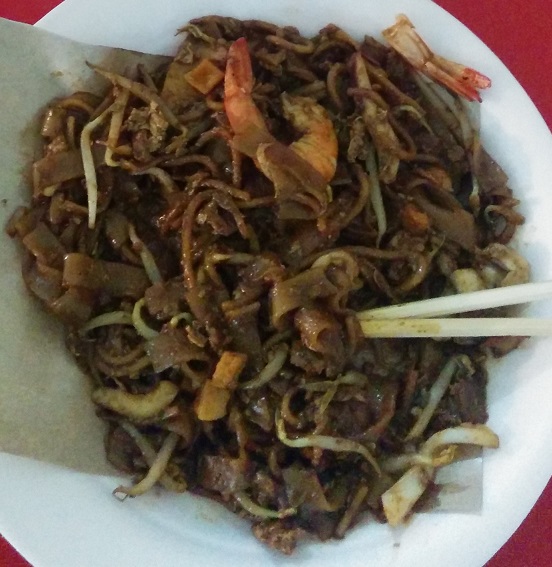 To me, this looks like what Americans would call lo mein: fried, long thin noodles in a dark-ish sauce with vegetables and a meat.
To me, this looks like what Americans would call lo mein: fried, long thin noodles in a dark-ish sauce with vegetables and a meat. - Char Kway Teow: This is also a type of stir-fried noodle, but the noodles tend to be wider, and it is cooked in a dark soy sauce. It’s also more likely to have cockles and other seafood things in it.
- Chai Tow Kway: This is called fried carrot cake on menus, though this is very confusing because it’s really an omelet with soft radish pieces baked into it (often including shrimp or other seafood). Wikipedia says that this is because the word for daikon is the same as the one for carrot! There are also oyster omelets at these stands, which are exactly what they sound like.
- Bao:
 That’s the Chinese word for ‘bun.’ They are white, ultra-soft, steamed, and filled with shredded pork or chicken. In the US, they are sometimes seen at dim sum restaurants.
That’s the Chinese word for ‘bun.’ They are white, ultra-soft, steamed, and filled with shredded pork or chicken. In the US, they are sometimes seen at dim sum restaurants. - Satay: This is usually considered Thai cuisine in the US, but the local (Malay) version is sweeter than that. It is meat – usually, chicken, beef, and mutton – on a stick, with a marinade and a dipping sauce.
- Roti John: This is a roasted baguette with melted cheese, eggs, onions, and meat – likely mutton, since this tends to be a Malaysian Halal food.
- (Roti) Prata: This is the local version of crepes, though they’re usually savory and not sweet.
- Bak Kut Teh: This means ‘pork bone tea,’ though we mostly saw it listed as pork and lotus soup. Neither of us tried it, but the locals seem to enjoy it.
- Yong Tau Fu: This is a Chinese dish featuring meat or seafood inside tofu casing. We mostly saw it as a soup: you pick different variations of it and of veggies on a plate, and they fry it up and put it in a broth for you.
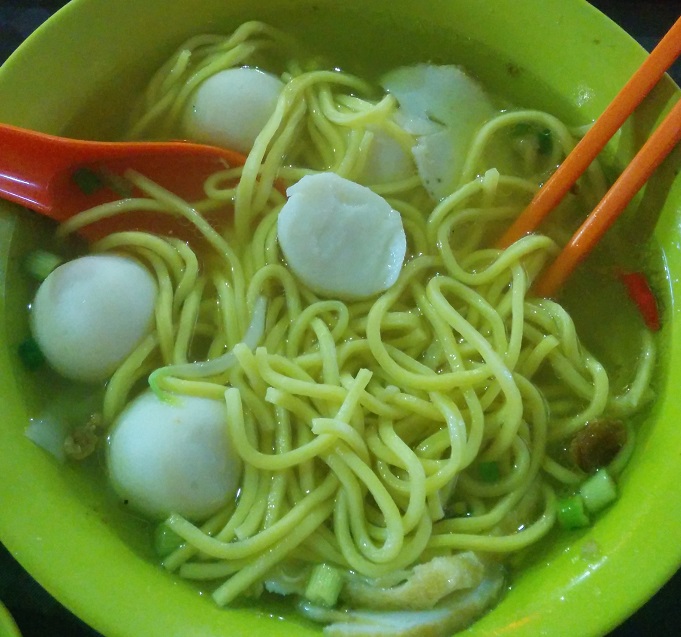
- Fish Head Curry: This is another dish we didn’t try, mostly because it was expensive and didn’t look appetizing. It’s the head of a snapper cooked in a curry-type sauce, and that’s exactly what it looked like in the pictures.
- Bak Kwa: To Americans, this looks like moist jerky strips. They are usually made of pork and sold in sheets or in rounds all over Chinatown.
- Bak Chor Mee Sua or Fish Ball Soup: This is thin noodles in soup broth with either minced/ground meat (bar chor mee sua) or fish balls in it.
- Laksa: Though the linked article lists many kinds of laksa, we mostly saw the curry kind. It was thin noodles and seafood in a coconut and curry broth. This is not something you eat when you’re wearing nice clothes you don’t want to splatter on.
- Nasi Lemak:
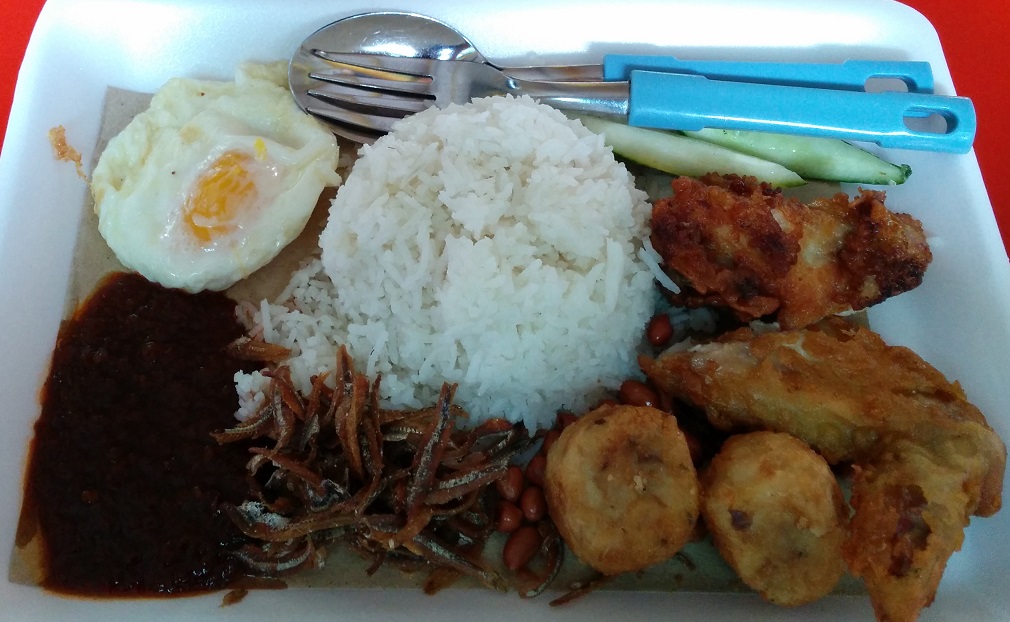 This is rice cooked in coconut, along with some side dishes, like dried anchovies. Fried egg is another common side, because this is often eaten for breakfast in Malay culture.
This is rice cooked in coconut, along with some side dishes, like dried anchovies. Fried egg is another common side, because this is often eaten for breakfast in Malay culture. - Nasi Padang: This is similar to the above dish, but served for lunch or dinner. Again, the flavored rice is the star, with dishes of veggies and meat on the side.
- Rice Porridge/Congee:
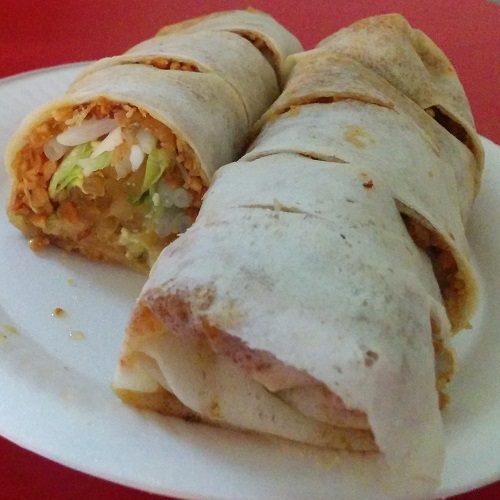 Though we didn’t try this dish, it looked like rice gruel with stuff in it.
Though we didn’t try this dish, it looked like rice gruel with stuff in it. - Popiah: This is my favorite dish in Singapore. To make this, they cover a tortilla in spicy sauce, and then fill it with shredded cabbage, cooked daikon, peanuts, dried anchovies, and any number of other things I can’t identify. Then, they roll it and cut it into pieces, and I devour it. So good – and a rarefied non-fried item in Singaporean cuisine.

- Thunder Tea Rice: This is my second-favorite thing to eat in Singapore, and similarly not fried. It’s rice (brown or white) with peanuts, dried anchovies, and green vegetables of various kinds. A sauce gets poured over it, which is why they call it tea: you can add so much that the food swims in the liquid. The liquid is green and looks a bit like pesto.
- Kacang [Dessert]: This is shaved ice with syrup and various fruits and jellies. B’s favorite was one with sweet corn and peanuts, though I liked the mango one.
Drinks
- Milo Drink: This is a milk chocolate drink made from Milo powder and usually, ice. The unique part is that here, they heap more of the chocolate powder used to make the drink on top!
- Barley Drink: Let me remove a guaranteed source of confusion: this is pronounced ‘Bali’ here, with no ‘r.’ It’s a white drink, and I can’t think of anything to compare the taste to. They say it’s a type of herbal tea, but it doesn’t taste like it at all.
- Water Chestnut Drink: This looks like a fairly disgusting shade of moss or mud green. It tastes much better than that, but again, no particular taste I can reference.
- Cane Sugar Drink: This is a lighter shade of green and tastes like sugar – but not as overwhelming as that sounds.
- Teh Halia: Singaporean tea (‘teh’) would remind Americans of chai: it includes milk and sugar, and is usually poured back and forth between two cups to maximize foaminess. This particular type has ginger in it; it’s not overwhelming, but you can definitely taste it.
- Kopi: This is how Singaporeans say ‘coffee.’ The default comes with sugar and with milk. For no milk, you say ‘kopi-o,’ and for no sugar, you say ‘kopi kosong.’ The also have ice kopi everywhere.



Pingback: What We Ate in Singapore - Novelty Buffs
Pingback: Haha, So Weird: Reply to A - Novelty Buffs